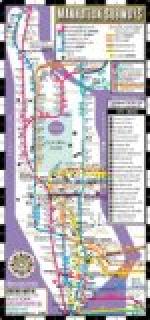In view of the peculiar traffic conditions existing in New York City and the restricted siding and yard room available in the subway, it was decided that one standard type of car for all classes of service would introduce the most flexible operating conditions, and for this reason would best suit the public demands at different seasons of the year and hours of the day. In order further to provide cars, each of which would be as safe as the others, it was essential that there should be no difference in constructional strength between the motor cars and the trail cars. All cars were therefore made of one type and can be used interchangeably for either motor or trail-car service.
The motor cars carry both motors on the same truck; that is, they have a motor truck at one end carrying two motors, one geared to each axle; the truck at the other end of the car is a “trailer” and carries no motive power.
[Illustration: SIDE VIEW OF STEEL PASSENGER CAR]
Some leading distinctive features of the cars may be enumerated as follows:
(1.) The length is 51 feet
and provides seating capacity for
52 passengers. This length
is about 4 feet more than those of
the existing Manhattan Elevated
Railroad cars.
(2.) The enclosed vestibule platforms with sliding doors instead of the usual gates. The enclosed platforms will contribute greatly to the comfort and safety of passengers under subway conditions.
(3.) The anti-telescoping car bulkheads and platform posts. This construction is similar to that in use on Pullman cars, and has been demonstrated in steam railroad service to be an important safety appliance.
(4.) The steel underframing
of the car, which provides a
rigid and durable bed structure
for transmitting the heavy
motive power stresses.
(5.) The numerous protective
devices against defects in the
electrical apparatus.
(6.) Window arrangement, permitting
circulation without
draughts.
(7.) Emergency brake valve on truck operated by track trip.
(8.) Emergency brake valve
in connection with
master-controller.
The table on page 133 shows the main dimensions of the car, and also the corresponding dimensions of the standard car in use on the Manhattan Elevated Railway.
The general arrangement of the floor framing is well shown in the photograph on page 132. The side sills are of 6-inch channels, which are reinforced inside and out by white oak timbers. The center sills are 5-inch I-beams, faced on both sides with Southern pine. The end sills are also of steel shapes, securely attached to the side sills by steel castings and forgings. The car body end-sill channel is faced with a white-oak filler, mortised to receive the car body end-posts and braced at each end by gusset plates. The body bolster is made up of two rolled steel plates bolted together at their ends and supported by a steel draw casting, the ends of which form a support for the center sills. The cross-bridging and needle-beams of 5-inch I-beams are unusually substantial. The flooring inside the car is double and of maple, with asbestos fire-felt between the layers, and is protected below by steel plates and “transite” (asbestos board).




